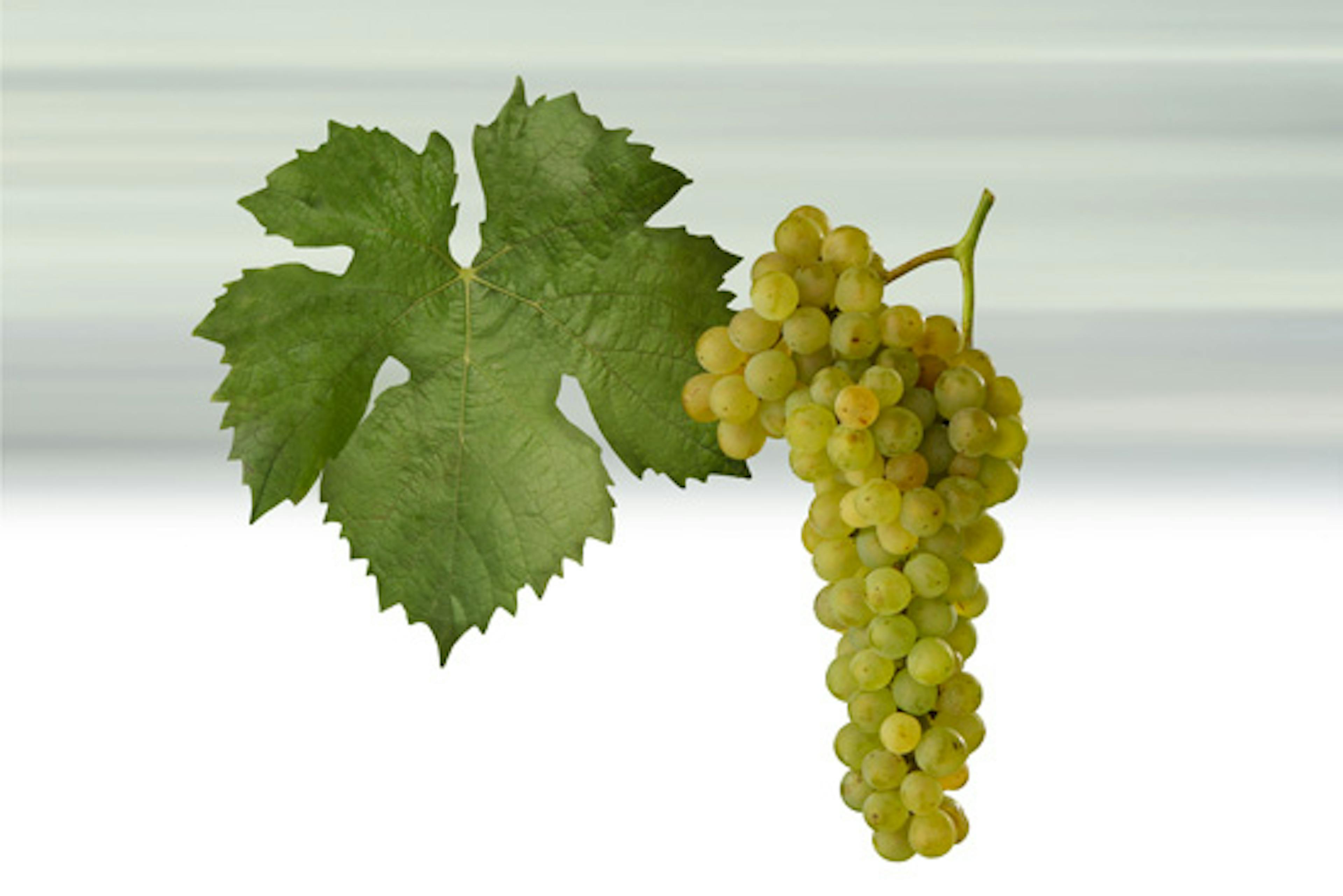Variety detail
Müller Thurgau
Basic characteristics of wine
Müller Thurgau is our fifth most cultivated white variety (9.46%), so it is produced by almost all wine producers. Müller from Valtice, Mikulov, Znojmo, Mělnicko or Žernoseky is definitely worth a try. Müller Thurgau is best drunk as a young wine under two to three years of age. This, together with its early maturation, is one of the reasons why it is one of the main varieties of St. Martin's wines.
Colour
The variety is usually less pronounced, greenish yellow with sparkling reflections.
Wine aroma
Mildly aromatic, spicy, with light nutmeg and pleasant fruit tones of peach or grapefruit.
Taste
Fresh, moderately full, harmonious, juicy with a slightly spicy touch, encouraging further drinking.
Food and wine pairing

Wine profile
Interesting wines
About
Synonymum: Rivaner
11.2% of total vineyard plantings.
Entered in the State Register of Grape Varieties in 1941.
Medium body, well-balanced and a very pleasant and drinkable wine of undemanding and refreshing character.
This variety is known in Switzerland as Riesling-Silvaner, for these two varieties are the presumed parents of this, the most famous crossing in the world. Müller-Thurgau was developed in 1882 at the German Vine Research Institute at Geisenheim, by a professor Hermann Müller, who hailed from the canton of Thurgau in Switzerland. At the time he was teaching botany. One of its synonyms, Rivaner, which comes from Slovenia, lends support to its presumed origins. In recent times Dr. F. Regner from the wine school in Klosterneuburg with the aid of genetic analysis has found that we are really dealing with Riesling x Chasselas de Courtillier (Madeleine Royale). Whatever the case, the variety has spread across all the northern wine regions of northern Europe as well as overseas.
The growth is of medium vigour, the vines have pentagonal leaves with deep grooves and sparse foliage. It is an early ripening grape variety, it has a regular and abundant crop, low acidity and pleasing aromatic flavours. Its resistance to frost is relatively low as is that to fungal diseases. Its demands with regard to vineyard positioning are not high, though the soil needs to be deep and fertile.
The high quality of the wine only shows when yields at harvest area limited and in line with vineyard positioning conditions. From high yields, which are easy to achieve, the wine is thin and bitter. One has to say that under optimum conditions the wine is of a light colour with yellowish-green undertones. The nose evokes tones of muscat along with those of other fruit and, depending on the yields and the weather in a given year and on the procedures by which the wine is made. The nose could have grass, citrus, muscat, gooseberry, blackcurrant notes. Correct application of technology can give a wine that is best to drink young and fresh, on the basis of its low alcohol content. If it has sufficient levels of acidity, with muscat-like nose and with a smooth finish, it soon invites one to take another sip.
One has to say that under optimum conditions the wine is of a light colour with yellowish-green undertones.
Unfortunately the consumer is more often than not liable to come across wines of little aroma, that are dull and with a bitter aftertaste, which are the results of an improper following of the most basic technological procedures in winemaking. This is what has recently pushed this valueable variety to the background. Wines of Müller-Thurgau are for everyday drinking, are food-friendly and suitable for parties and social gatherings.
Basic characteristics of quality wines:
Greenish-yellow hue, muscatty fruity nose with pronounced grapefruit and peach tones. Medium body, well-balanced and a very pleasant and drinkable wine of undemanding and refreshing character.
Translation © Helena & John Baker 2004.





